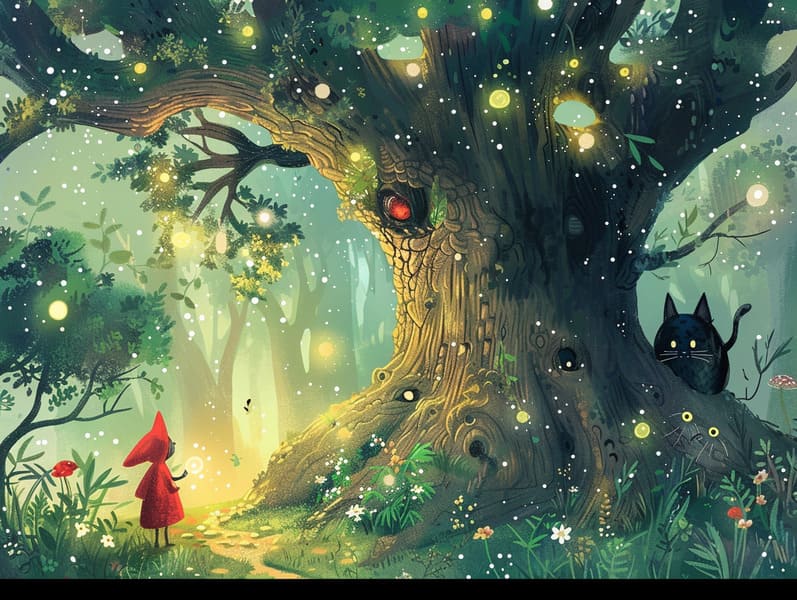Delving into the Background of Grimm's Fairy Tales and Their Unceasing Allure.
Delving into the Background of Grimm's Fairy Tales and Their Unceasing Allure.
Blog Article

Timeless fairy tales have ancient roots. These stories have been passed down from one generation to the next well before they were ever put on paper. They came from a variety of cultures, including Middle Eastern traditions. They were initially passed along among adults, often carrying themes and messages concerning the societal norms and beliefs of the time.
The famous Grimm duo, Jacob and Wilhelm, were among the first to compile and publish many of these beloved fairy tales. Their anthology, "Grimm's Children's Stories," included narratives like "The Little Glass Slipper," "Little Brother and Little Sister," and "Snow White," which have since become mainstays in the world of famous fairy tales. Similarly, Hans Christian Andersen's imaginative stories, such as "The Little Mermaid," and "The Ugly Duckling," have won hearts worldwide, securing their place in the pantheon of timeless fairy tales.
Despite their historical roots, classic fairy tales remain as meaningful as ever, especially as kids' bedtime tales. These magical stories are now available in various formats, including vibrantly illustrated books, delightful animations, and online fairy tales.
Their ongoing significance can be credited to several whimsical characteristics:
Valuable Lessons: Timeless fairy tales often illustrate important moral lessons. Fairy tales like "The Boy Who Cried Wolf" teach the virtue of truth, while "The Tale of the Tortoise and the Hare" point out the traits of steadfastness and humility. These stories offer little ones clear distinctions between moral and immoral, forming their moral compass in a subtle yet meaningful way.
Warmth and Understanding: Classic fairy tales frequently depict heroes facing tests and troubles, inciting audiences to identify with their struggles and encourage their triumphs. For instance, "Beauty and the Beast" conveys the significance of looking past the exterior to perceive the true character of a person, fostering warmth and appreciation.
Cultural Perception: Many classic fairy tales are imbued with the cultural contexts from which they sprang. Engaging with these tales can provide captivating looks into different beliefs, promoting a sense of world understanding and appreciation.
Creativity and Imagination: The fanciful elements in old fairy tales—spells and potions—activate children’s imaginations. These stories take readers to fantastical realms, motivating imaginative thinking and a sense of amazement that remains a lifetime.
Old fairy tales are not only enchanting but also instructive. They work as captivating tools in enhancing various intellectual and emotional capacities in kids. When classic fairy tales are recited, they cultivate communication skills by bringing new terms and meanings and intricate sentence structures. This practice also improves listening abilities and mental focus, as little ones listen intently, anticipating to see what happens next.
Furthermore, deliberating the themes and characters of timeless fairy tales can cultivate cognitive skills and evaluative skills. The young are educated to see patterns, make predictions, and make sense of cause and effect. These analyses also encourage children say their thoughts and feelings, enhancing their emotional intelligence.
In today’s modern era, the existence of web-based fairy tales has made these tales more obtainable than ever. Online platforms and applications offer huge assortments of classic fairy tales that can be accessed or listened to anytime, anywhere. Fairy tales narrated are particularly popular, supplying an charming way for the young to immerse in these mesmerizing stories. Sound books and read-out-loud stories transport characters and settings to life, often enhanced by mesmerizing harmonies and musical scores that augment the storytelling journey.
The persistent attraction of old fairy tales lies in their ability to alter to current eras while holding onto their basic principles. Contemporary modernizations of these stories often bring in more diverse figures and modern settings, making them relatable to today’s audience. However, here the underlying themes of courage, benevolence, and truth remain unchanged, continuing to influence young listeners of all ages.
Timeless fairy tales also offer a sense of security and understanding. They introduce a ordered narrative with a plain beginning, middle, and end, often coming to a close with the culmination of conflicts and the triumph of goodness over badness. This reliability can be consoling for kids, yielding a sense of unchangeability in an inconstant world.
Ancient fairy tales continue to enthrall and instruct new generations, maintaining their beauty and significance in modern society. As kids' bedtime tales, they put out a perfect blend of fantasy and learning, nourishing moral values, empathy, and creativity. The existence of online fairy tales and the sought after status of fairy tales recited ratify that these classic tales remain within reach to new generations.
By safeguarding and narrating these fairy tales, we continue to venerate the rich tapestry of inventiveness and cultural heritage. Whether you are browsing a colorful picture book, viewing a digital library, or playing an sound book, the radiance of timeless fairy tales is always within reach. These stories point out of the timeless nature of fairy tales and its ability to tie us across centuries and lands.
No matter if you are exploring a gorgeously illustrated book, seeing a web-based collection, or listening through an read-aloud book, the grace of famous fairy tales is always within reach.
These fairy tales highlight of the invariable essence of storytelling and its ability to bond us across epochs and places, forging a link that captivates and teaches alike.